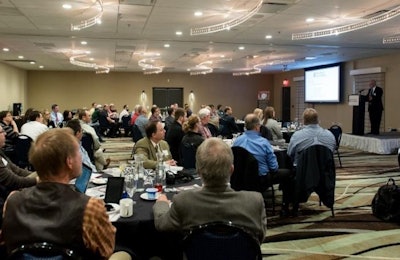
Zoomark International, a Europe-based trade event for the pet supplies market, wrapped up its 2017 show in May and recently released its show numbers. Unsurprisingly, the trend compared to its 2015 show was one of growth: 735 exhibitors, an increase of 17 percent, and a 36 percent increase in the number of foreign buyers and operators.
I say “unsurprisingly” because they’re not the only ones to see growth so far this year. Global Pet Expo, presented by the American Pet Products Association and the Pet Industry Distributors Association, held in Florida, USA, saw total buyer attendance grow 9.5 percent from 2016 numbers — international buyer attendance was up 22 percent, according to event organizers. Petfood Forum (full disclosure: Petfood Forum is organized and put on by WATT Global Media and Petfood Industry), a three-day conference and tradeshow geared towards the pet food industry, brought in 3,000 pet food professionals and close to 280 exhibitors, surpassing 2016 attendance and exhibitor figures. SuperZoo, another notable conference and national show for pet retailers, saw growth in 2016, and there’s no reason to believe the event won’t see more of the same when it takes place in Las Vegas, Nevada, USA, in July 2017.
Why do pet industry shows continue to grow?
With so many ways to do business, why do traditional tradeshows continue to thrive? The money, the time, the effort involved to get to the venue, to say nothing of long days filled with meetings, events and individual company goals to achieve — why bother, in an age where product catalogues can be found online, smartphones and communications programs like Skype and GoToMeeting have made even international meetings inconvenient only in terms of time zone, and time is more precious than ever in a fast-paced, constantly changing industry?
The short answer is the face-to-face factor. In 2016, Forbes interviewed Michael Massari, senior vice president of national meetings and events at Caesars Entertainment, and he had plenty to say on the value of continuing to do business in person. “If we don’t continue to nurture strong and positive personal relationships with our clients and coworkers, we won’t build trust, understanding or a sense of a shared mission — all of which are critical elements to successful partnerships and business success,” said Massari to Forbes. One significant benefit, he said, is the increased likelihood of closing a deal when conducting business face-to-face. It’s easier, he rightly pointed out, to say “no” over the phone or in an email.
Physically gathering together to do business, track trends or simply catch up and renew professional relationships continues to be a vital part of any thriving industry. And the pet industry in particular, with its steady growth and constant diversification of consumer needs in all segments, benefits significantly from such conference and tradeshow events, year after year.
Briefly: Benefits of face-to-face meetings
- Stay focused: In-person meetings mean it’s more difficult to let outside distractions (phone calls, emails, etc.) intrude on the matter at hand.
- Enhanced content and interaction: Speaking in person can prevent misunderstandings and increase idea and information exchange.
- Time savings and networking: Better focus means greater productivity, and a physical venue provides opportunities for free exchange of ideas.
- Mentoring and idea exchange: It’s often easier to guide newcomers to the industry and exchange ideas in person.
Source: Green Capital, “Benefits of face-to-face meetings vs. virtual meetings,” January 2016
Contact Me

















